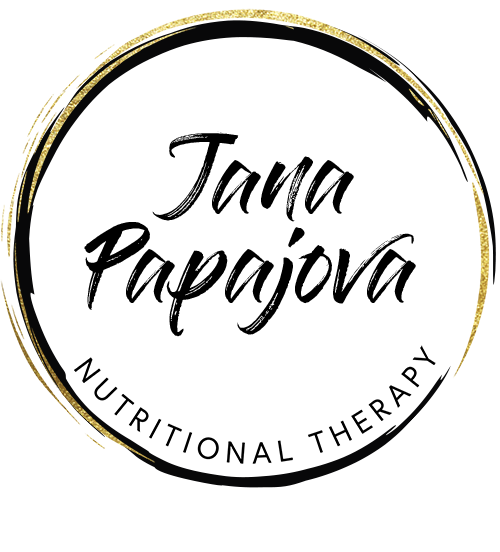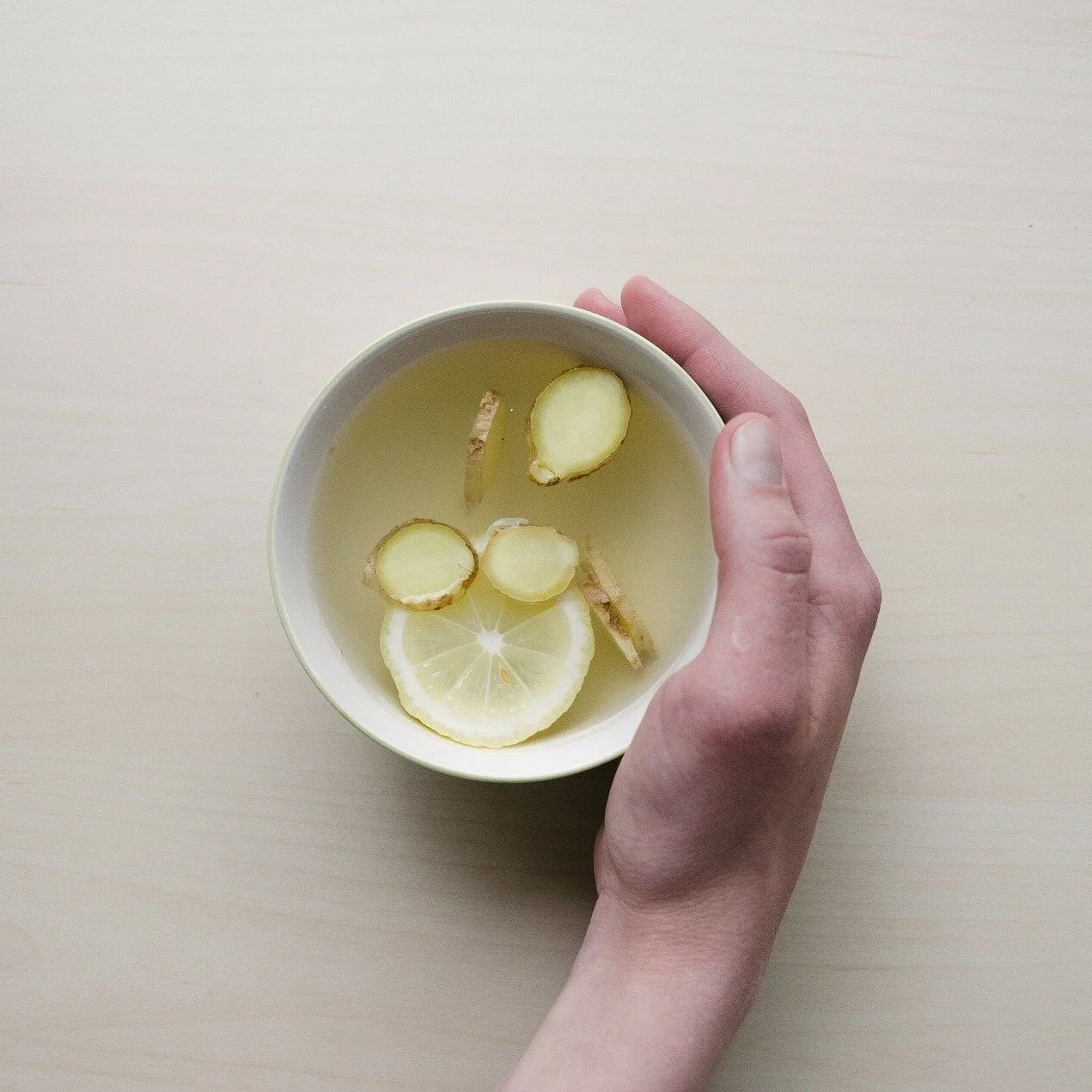10 PROVEN HEALTH BENEFITS OF GINGER
Estimated reading time: 5 minutes
Ginger is one of the most extensively used spices. It belongs to Zingiberaceae family and is rich in various chemical constituents including phenolic compounds, terpenes, polysaccharides, lipids, organic acids, and raw fibres.
The health benefits of ginger are mainly attributed to its phenolic compounds; gingerols, shogaols and zingerone (1,2, 24).
Although the daily intake of herbs and spices in the diet is very low compared to most other foods, ginger intake should not be underestimated, especially given the potential benefits to human health.
HEALTH BENEFITS OF GINGER:
Ginger may exert antioxidant, anti-inflammatory, antimicrobial, anti-hypertensive, anticancer, neuroprotective, cardiovascular protective, respiratory protective, antidiabetic, antinausea and analgesic properties (1, 2, 3, 9, 10, 12, 13, 20, 24).
Ginger has staring potential helping with a number of ailments including degenerative disorders (arthritis and rheumatism), digestive health (indigestion, constipation and ulcers), cardiovascular disorders (atherosclerosis and hypertension), vomiting and diabetes mellitus (1, 3, 5, 9, 10, 13, 17, 20, 24).
1. ANTIOXIDANT
Overproduction of free radicals, such as reactive oxygen species (ROS), plays an important part in the development of many chronic diseases. Ginger acts as an antioxidant. Antioxidants fight free radicals in your body (1, 24).
Dried ginger exhibited the strongest antioxidant activity. When fresh ginger was heated, dried ginger with higher antioxidant activity was obtained. However, when dried ginger was further heated the antioxidant activity decreased (1).
2. DIGESTIVE HEALTH
Ginger may exert both prebiotic effects and antimicrobial action. It enhances the growth of beneficial Bifidobacterium species and Lactobacillus species (4).
Ginger exhibits antibacterial activity towards inflammatory gut species such as Escherichia coli, Klebsiella pneumonia, Vibrio cholera, Streptococcus faecalis and Salmonella species (4, 20).
Ginger can stimulate digestion, relieve gas and settle an upset stomach (24).
Ginger has been shown to speed up emptying of the stomach, which can be beneficial for people with indigestion, constipation and associated stomach discomfort (3, 5, 24).
3. IMMUNITY
Ginger helps boost the immune system due to its antibacterial and antiviral properties (24).
Strengthening the body's defences by improving the antioxidant status can undoubtedly protect against many chronic diseases.
Because of potent compounds in ginger inhibiting allergic reactions, it may be useful for the treatment and prevention of allergic diseases (6).
Ginger root is used to attenuate and treat several common diseases, including colds (3, 24).
Ginger extract works against the same oral bacteria that is associated with inflammatory gum disease like periodontitis and gingivitis (24).
4. RELIEVES PERIOD PAIN AND PMS SYMPTOMS
Ginger is effective in relieving pain in girls with primary dysmenorrhea [dysmenorrhea = painful menstruation typically involving abdominal cramps] (7).
Ginger can significantly reduce symptoms of premenstrual syndrome - physical and behavioural symptoms including mood swings and headaches/migraines (8).
5. NAUSEA SUPPRESSANT
Ginger is effective at reducing nausea, vomiting, and travel sickness. It is often recommended to help with nausea due to chemotherapy, travel sickness, pregnancy and menstruation (3, 9, 24).
A review of 12 studies that included a total of 1,278 pregnant women shown that 1.1-1.5 grams of ginger can significantly reduce symptoms of nausea (10).
6. IMPROVES CIRCULATION
Ginger is known to warm the body, perfect for this time of the year.
A placebo-controlled crossover trial investigated the hyperthermic effect of a ginger-containing beverage in healthy women with cold-sensitive extremities. Six women drank 280 mL of 0.07% ginger extract-containing or placebo beverage in a temperature-controlled room. Their palm temperatures were measured using a thermographic camera before intake and every 10 minutes after intake for 60 minutes. Palm temperature increased immediately following intake of the ginger and placebo beverages. However, palm temperature following intake of the ginger beverage increased for 20 minutes, while palm temperature following placebo intake decreased again after 10 minutes (11, 24).
7. ANTI-INFLAMMATORY
The zingerone and the shogaol in ginger have anti-inflammatory properties and might be useful in a nutritional program for arthritis and fibromyalgia (24).
6-gingerol, a major bioactive component of ginger, is known to have several beneficial effects on health, including anti-inflammatory activity. 6-gingerol may have potential use in treating inflammatory bone loss (12).
In gout [rheumatic disease of joints], 6-shogaol has strong anti-inflammatory and antioxidant effects and can be used as a curative agent (1).
In a controlled trial of 247 people with osteoarthritis of the knee, those who took ginger extract had less pain and required less pain medication (13).
The commonly used anti-inflammatory drugs like ibuprofen were found to cause major injuries to the lining of the small intestine (causing intestinal permeability). Ibuprofen-type drugs reduce our stomach lining’s ability to protect itself from stomach acid. However, ginger can actually improve stomach lining protection. At quarter to half teaspoon of ginger per day, ginger can be as pain relieving as ibuprofen but without the risk of stomach ulcers (14, 15).
8. REDUCES MUSCLE PAIN AND SORENESS
Daily consumption of raw and heat-treated ginger resulted in moderate to large reductions in muscle pain (16).
4 g of ginger daily for 5 days resulted in a significant reduction in muscle damage biomarkers following eccentric exercise [eccentric movement is when your muscle works as it's lengthened: glutes when you're lowering into a squat, or biceps as you're lowering a dumbbell after a curl] (17).
9. HEADACHES
Ginger was found to be effective in relieving headaches (8).
Double-blind placebo-controlled randomized clinical trial by Martins et al. concluded that the addition of ginger to non-steroidal anti-inflammatory drugs may contribute to the treatment of migraine attack. Ginger treatment promoted reduction in pain (18).
10. LOWERS BLOOD SUGAR LEVELS, CONTROLS DIABETES AND DYSLIPIDEMIA
Ginger may have anti-diabetic properties.
Data from 45 patients with diabetes were analysed. Ginger consumption significantly reduced fasting blood glucose and HBA1C compared to the placebo group (19, 24).
Ginger consumption also reduced the ratio of LDL-cholesterol/HDL-cholesterol. However, there was no significant change in serum concentrations of triglycerides, total cholesterol, LDL-C, and HDL-C due to the ginger supplements.
Nammi et al. indicated that the ethanolic extract of ginger reduced body weight and levels of glucose, insulin, total cholesterol, LDL cholesterol, triglycerides, free fatty acids, and phospholipids in high-fat diets (20).
NUTRITIONAL FACTS
In 2 grams fresh ginger (9):
· Calories: 2 kcal
· Calcium: 0.3 mg
· Folate: 0.2 mcg
· Magnesium: 0.9 mg
· Potassium: 9.3 mg
· Phosphorus: 0.7 mg
· Vitamin C: 0.1 mg
Glycaemic load: 0 (Low)
SAFETY
If you experience heartburn consult your doctor or nutritionist before incorporating too much ginger into your diet (9).
Ginger is also said to increase bile acid secretion, which is why people with gallstones or gallbladder disease are advised to avoid the herb unless supervised by a health professional (24).
The evidence that ginger affects platelet aggregation and coagulation is confusing and further study is needed to definitively address this question. Ten studies were included, comprising eight clinical trials and two observational studies. Of the eight clinical trials, four reported that ginger reduced platelet aggregation, while the remaining four reported no effect. The two observational studies also reported mixed findings (21).
The findings of recent study in South Africa indicated that ginger is prone to mycotoxin contamination. Mycotoxins are naturally occurring toxins produced by certain fungi and can be found in staple food plants such as ginger. Four types of Aflatoxins were considered and were higher in summer than in winter (22).
Storage at temperature of 5 °C is recommended and the storage time should be not more than 4 months. Proper storage has a significant impact on the quality of herbs and spices (23).
Image source: Pixabay
Written by: Jana Papajova
Published on: 28th December 2019
References:
1. Mao, Q. Xu, X. Cao, S. et al. (2019). ‘Bioactive Compounds and Bioactivities of Ginger (Zingiber officinale Roscoe)’. Foods, 8(6), p.185.
2. Konstantinidi, M. and Koutelidakis, A. (2019). ‘Functional Foods and Bioactive Compounds: A Review of Its Possible Role on Weight Management and Obesity’s Metabolic Consequences’. Medicines, 6(3), p.94.
3. Mashhadi, N.S. Ghiasvand, R. Askari, G. et al. (2013). ‘Anti-Oxidative and Anti-Inflammatory Effects of Ginger in Health and Physical Activity: Review of Current Evidence’. International Journal of Preventive Medicine. 4(1), pp.36-42.
4. Peterson, C. Rodionov, D. Iablokov, S. et al. (2019). ‘Prebiotic Potential of Culinary Spices Used to Support Digestion and Bioabsorption’. Evidence-Based Complementary and Alternative Medicine, 2019, pp.1-11.
5. Hu, M. (2011). ‘Effect of ginger on gastric motility and symptoms of functional dyspepsia’. World Journal of Gastroenterology, 17(1), p.105.
6. Chen, B. Wu, P. Chen, K. et al. (2009). ‘Antiallergic Potential on RBL-2H3 Cells of Some Phenolic Constituents of Zingiber officinale (Ginger)’. Journal of Natural Products, 72(5), pp.950-953.
7. Adib Rad, H. Basirat, Z. Bakouei, F. et al. (2018). ‘Effect of Ginger and Novafen on menstrual pain: A cross-over trial’. Taiwanese Journal of Obstetrics and Gynecology, 57(6), pp.806-809.
8. Khayat, S. Kheirkhah, M. Behboodi, M.Z. et al. (2014). ‘Effect of Treatment with Ginger on the Severity of Premenstrual Syndrome Symptoms’. ISRN Obstetrics and Gynecology, 2014, pp.1-5.
9. Shealy, C. N. (2014). The illustrated food remedies sourcebook. First Edition. London: Harper Collins Publishers. pp. 264-265.
10. Viljoen, E. Visser, J. Koen, N. et al. (2014). ‘A systematic review and meta-analysis of the effect and safety of ginger in the treatment of pregnancy-a5ssociated nausea and vomiting’. Nutrition Journal, 13(1), pp.13-20.
11. Sugimoto, K. Takeuchi, H. Nakagawa, K. et al. (2018). ‘Hyperthermic Effect of Ginger (Zingiber officinale) Extract-Containing Beverage on Peripheral Skin Surface Temperature in Women’. Evidence-Based Complementary and Alternative Medicine, 2018, pp.1-8.
12. Hwang, Y. Kim, T. Kim, R. et al. (2018). ‘The Natural Product 6-Gingerol Inhibits Inflammation-Associated Osteoclast Differentiation via Reduction of Prostaglandin E2 Levels’. International Journal of Molecular Sciences, 19(7), p.2068.
13. Altman, R. and Marcussen, K. (2001). ‘Effects of a ginger extract on knee pain in patients with osteoarthritis’. Arthritis & Rheumatism, 44(11), pp.2531-2538.
14. Haniadka, R. Saldanha, E. Sunita, V. et al. (2013). ‘A review of the gastroprotective effects of ginger (Zingiber officinale Roscoe)’. Food & Function, 4(6), p.845.
15. Leach, M.J. and Kumar, S. (2008). ‘The clinincal effectifveness of Ginger (Zingiber officinale) in adults with osteoarthritis’. International Journal of Evidence Based Healthcare. 6(2), p. 311-320.
16. Black, C. Herring, M. Hurley, D. et al. (2010). ‘Ginger (Zingiber officinale) Reduces Muscle Pain Caused by Eccentric Exercise’. The Journal of Pain, 11(9), pp.894-903.
17. Harty, P. Cottet, M. Malloy, J. et al. (2019). ‘Nutritional and Supplementation Strategies to Prevent and Attenuate Exercise-Induced Muscle Damage: a Brief Review’. Sports Medicine - Open, 5(1).
18. Martins, L. Rodrigues, A. Rodrigues, D. et al. (2018). ‘Double-blind placebo-controlled randomized clinical trial of ginger (Zingiber officinale Rosc) addition in migraine acute treatment’. Cephalalgia, 39(1), pp.68-76.
19. Makhdoomi, A.M. Mohammadzadeh, H.N. Saedisomeolia, A.et al. (2017). ‘The Effects of Ginger on Fasting Blood Sugar, Hemoglobin A1c, and Lipid Profiles in Patients with Type 2 Diabetes’. International Journal of Endocrinology and Metabolism, 15(4), p.57927.
20. Nammi, S. Sreemantula, S. and Roufogalis, B. (2009). ‘Protective Effects of Ethanolic Extract ofZingiber officinaleRhizome on the Development of Metabolic Syndrome in High-Fat Diet-Fed Rats’. Basic & Clinical Pharmacology & Toxicology, 104(5), pp.366-373.
21. Marx, W. McKavanagh, D. McCarthy, A. et al. (2015). ‘The Effect of Ginger (Zingiber officinale) on Platelet Aggregation: A Systematic Literature Review’. PLOS ONE, 10(10), p.0141119.
22. Omotayo, O. Omotayo, A. Babalola, O. et al. (2019). ‘Comparative study of aflatoxin contamination of winter and summer ginger from the North West Province of South Africa’. Toxicology Reports, 6, pp.489-495.
23. Ghasemzadeh, A. Jaafar, H. and Rahmat, A. (2016). ‘Changes in antioxidant and antibacterial activities as well as phytochemical constituents associated with ginger storage and polyphenol oxidase activity’. BMC Complementary and Alternative Medicine, 16(1), p.382.
24. Bowden, J. (2017). 150 Healthiest Foods on Earth. Revised Edition. USA: Quarto Publishing Group. pp.317-318.

